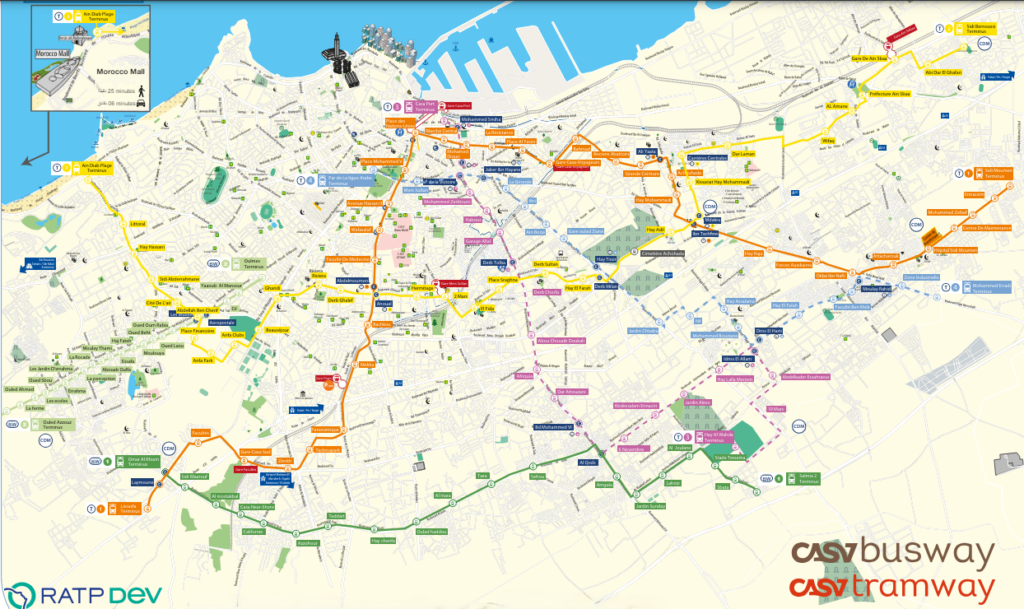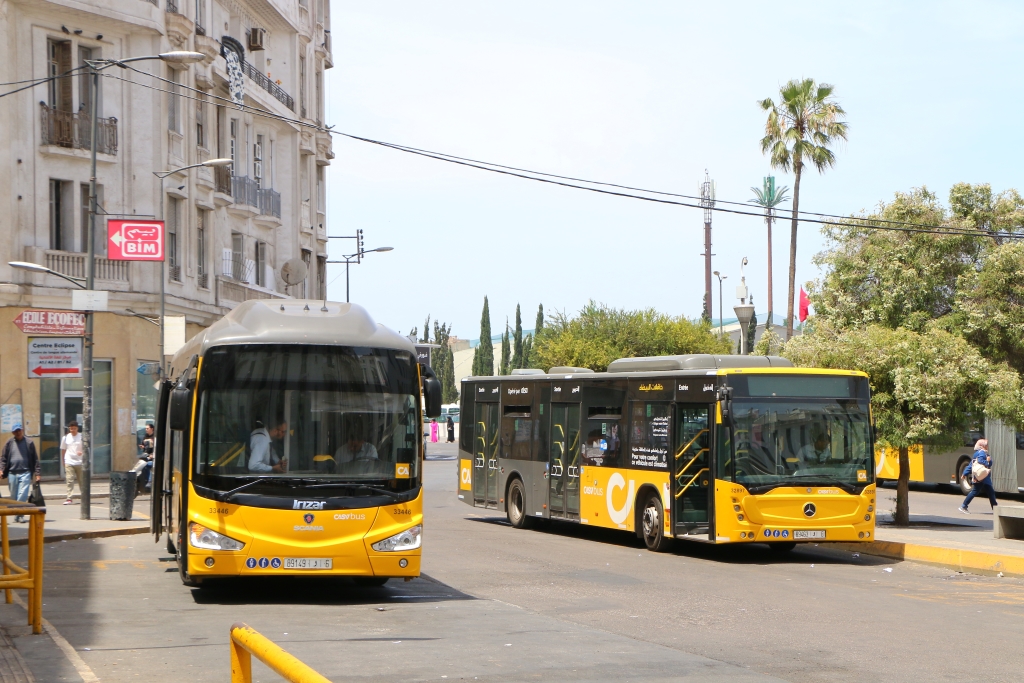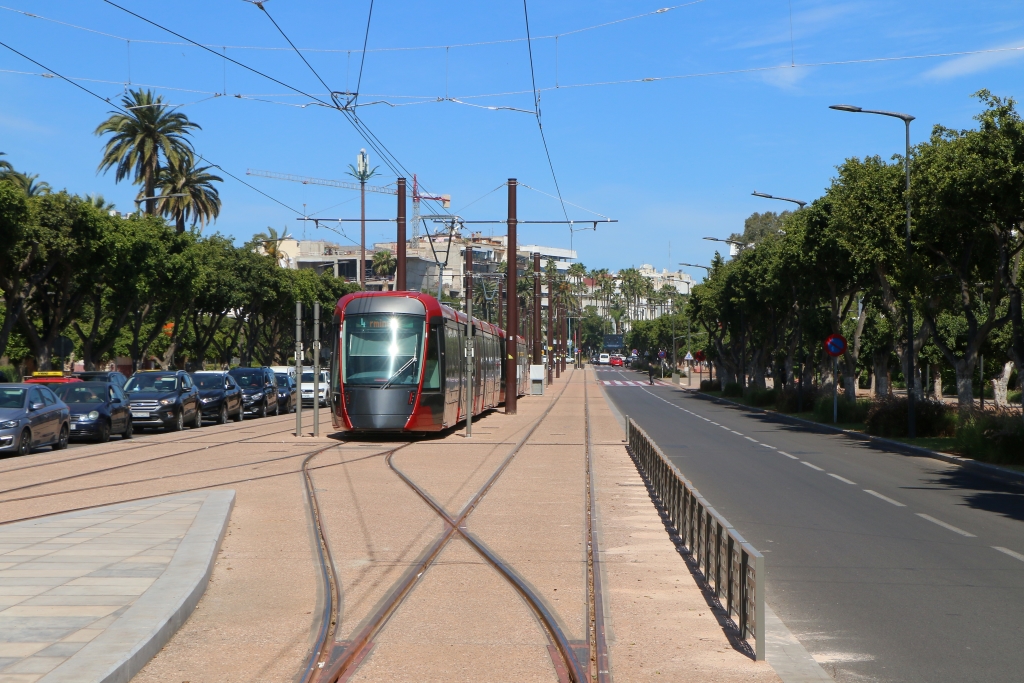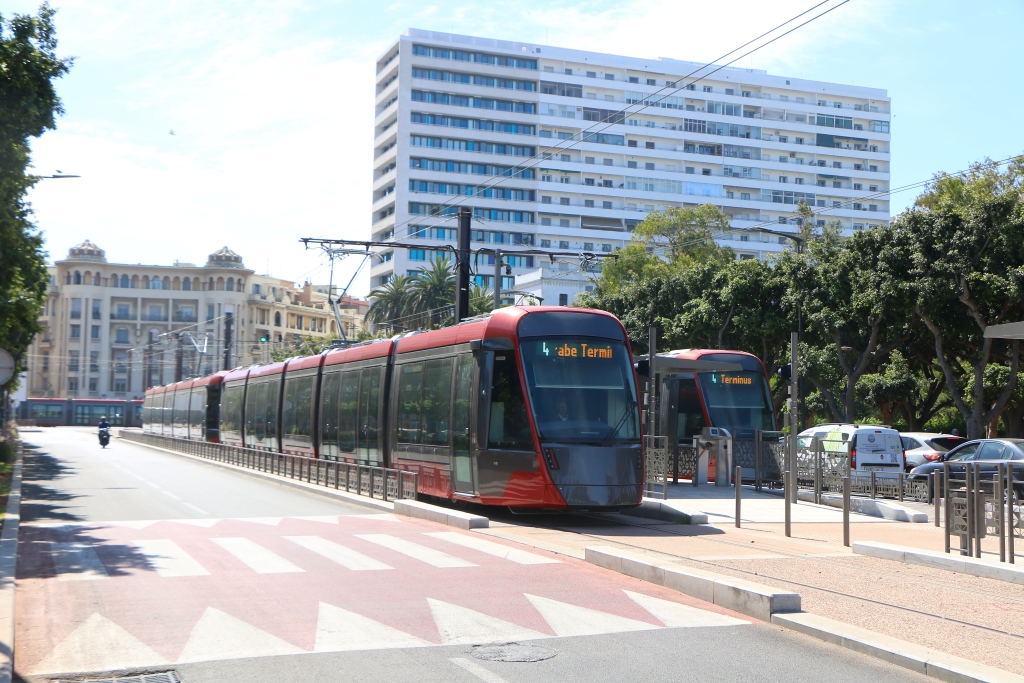
In the Moroccan metropolis of Casablanca, the expansion of local public transport continues to be a priority: in June 2024, the two new tram lines T3 and T4 will start revenue service, increasing the network length by almost 60%.
Casa Tramway has quickly proved to be a model of success since the first line opened 12 years ago. So it was hardly surprising that the city council and the prefecture decided to go ahead with the further expansion of the network, which was already on paper. Following the commissioning of the second line T2 in 2019, the route length grew to 46 km, and the initial 74 Alstom Citadis 302, which only have one driver’s cab but doors on both sides, were supplemented by 50 identical vehicles.
Construction of the two new lines T3 and T4 began in 2019, but was delayed mainly due to the coronavirus pandemic and was only largely completed at the beginning of this year. Test operations have been in full swing on both lines since March 2024, and the timetabled operation is currently being simulated to a large extent. Only the 66 Citadis X05 tramcars supplied by Alstom since 2022 are running here, also equipped with only one driver’s cab and doors on both sides for bidirectional operation. They always run in double traction as coupled pairs rear-to-rear, too.



See also: https://www.urbanrail.net/af/casa/casablanca.htm
Opening of the new lines has been announced for the coming month of June, probably in the presence of the King. The existing lines T1 with a length of 23.6 km and 38 stops and T2 with 33 stops over 22.4 km will then be joined by the following new lines:
T3 Gare de Casa-Port – Hay El Wahda (20 stops, length 14.1 km)
T4 Parc de la Ligue Arabe – Mohammed Erradi (19 stops, length 12.5 km)
None of the four Casa Tramway lines share a common section of track, although there are various intersections and interchanges with transfer options and usually also track connections for operational purposes. Line T4 is to be extended from the Parc de la Ligue Arabe to the Grand Mosque on Casablanca’s beach in the north of the city – although no date has yet been set for this. The construction of further tram lines is being planned in the medium to long term, but the focus has recently been increasingly on Bus Rapid Transit (BRT), the first two lines of which went into service in March 2024. So far, however, they only operate outside the actual city centre and connect to the T1 and T2. Four-axle Mercedes-Benz CapaCity L articulated diesel buses are used here. We reported on this here.


The fleet of other regular city buses, which had been severely neglected for many years, is currently quite uniform: since 2020, Mercedes-Benz Conecto as 12-metre and articulated buses, which the manufacturer supplied to the operator ALSA in Morocco from its Turkish plant in a number of 500 (80 of which are articulated), operate here together with 200 low-entry buses from the Spanish manufacturer Irizar of type i3 with Scania engines, which were assembled at a local branch facility of the manufacturer.
Longer-term options also envisage the construction of a predominantly underground metro, which could certainly serve the growing Casablanca conurbation with its more than 3 million inhabitants very well. However, these plans have been around for decades. Despite all the successes and the short timetable intervals, the tramway is often already reaching the limits of its capacity, even if all services are operated in double traction and thus offer space for almost 440 passengers each. With the metro, it might also be possible to achieve higher travelling speeds: Currently, the tram runs at an average comercial speed of approximately 19 km/h, despite the reserved track alignment throughout. The crowds at the stops, all of which have restricted access and are monitored by two staff, sometimes lead to longer stops, as does the rather slow journey in the inner city centre and on winding sections in narrow streets. In addition to the traffic lights, larger road junctions are also controlled by police officers, who are supposed to keep the massive and often quite chaotic traffic under control. In principle, however, the tram also has traffic light priority here.





